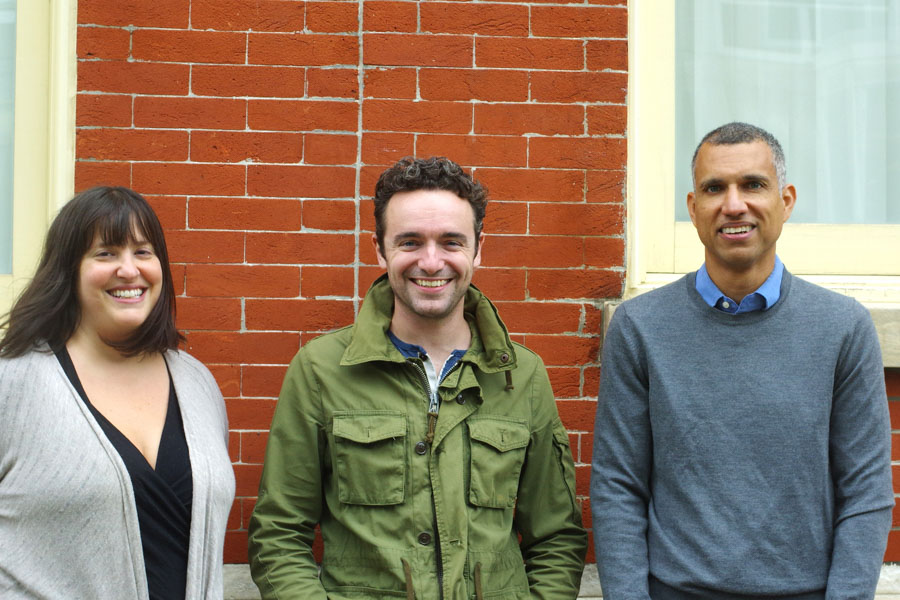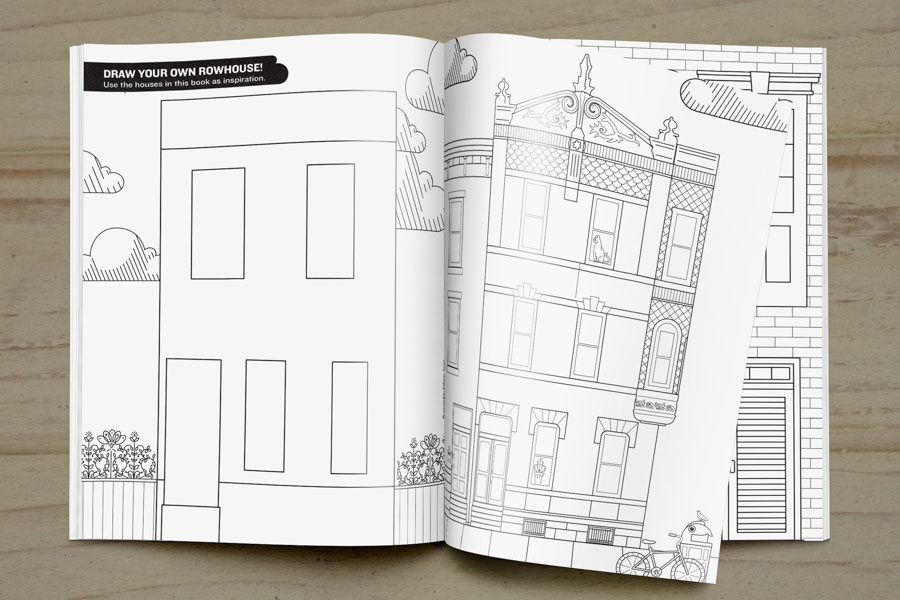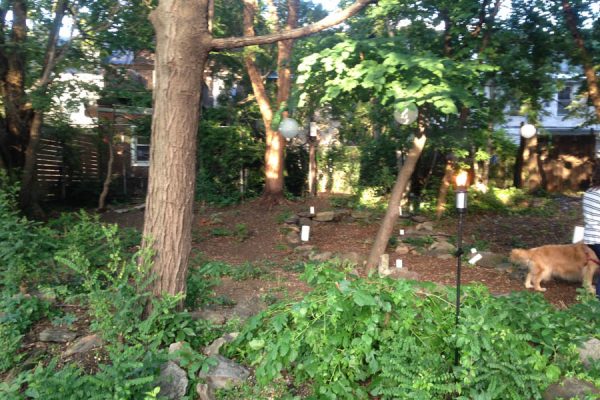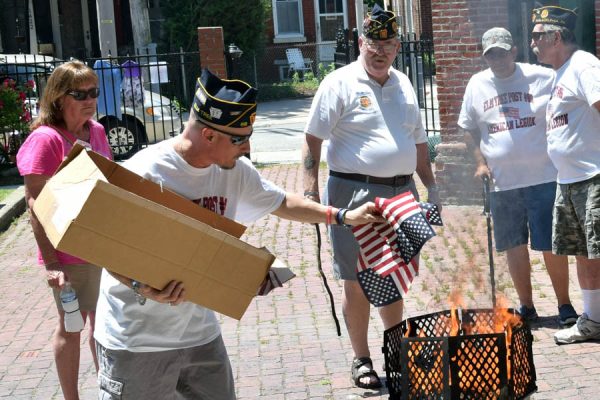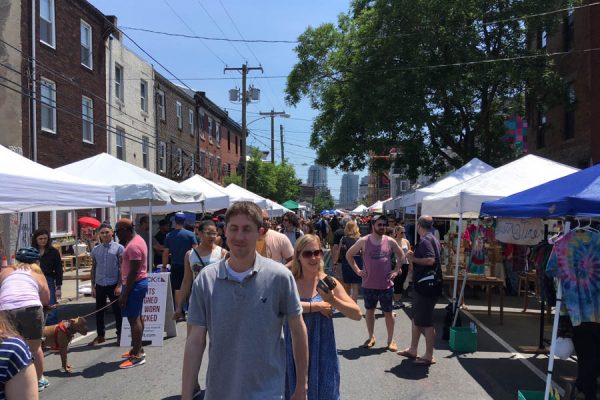3 Temple Professors Want You to Celebrate Where You Live — the Rowhouse!
The rowhouse — you walk, drive or bike past hundreds of them on a day. Heck — many, if not all, of you live in them.
As the ubiquitous building style of the residential scene of Philadelphia, the rowhouse has become part of what makes the city of Brotherly Love unique. They line our streets; they’re diverse pieces of architecture that reflect the ambitions of the people who built and lived there; they even resulted in Philadelphia becoming the “City of Homes” by the end of the nineteenth century.
With more than 70 percent of Philadelphians living in them and with approximately 360,000 of them constructed in our city, three Temple University professors have launched a collaborative project, PhillyRow, to help you know more about your city.
“We want to bring love, knowledge and appreciation of the rowhouse to the people that live here,” said PhillyRow’s Bryan Satalino, an Assistant Professor of Graphic and Interactive Design at Tyler School of Art and also a Kensington resident. “We have over a million people here living in rowhouses and that’s really incredible.”
Satalino collaborates with Clifton Fordham, an Assistant Professor of Architecture and South Philly resident, and Abby Guido, Assistant Professor of Graphic and Interactive Design and Kensington resident, on the rowhouse project.
Satalino’s inspiration for the project sparked when catching Philly’s rowhouse scene from a new perspective — an airplane. “I was flying over Philly and just seeing so many vast tracts of rowhouses — it was an insane amount,” he said. “There are 130 miles of Philadelphia and 70 percent of that is rowhouses.”
“To me, the rowhouse is an interesting building style because it rides the line of destiny,” continued Satalino. “We’re not in the suburbs where it is one house per square mile. We are up against each other here; humans packed in. But, we are also not a large high-rise city and we do not have high-density areas in Philadelphia. The rowhouse lends to our overall neighborhood feel and allows us to be economically and environmentally friendly — both of which has become important to many.”
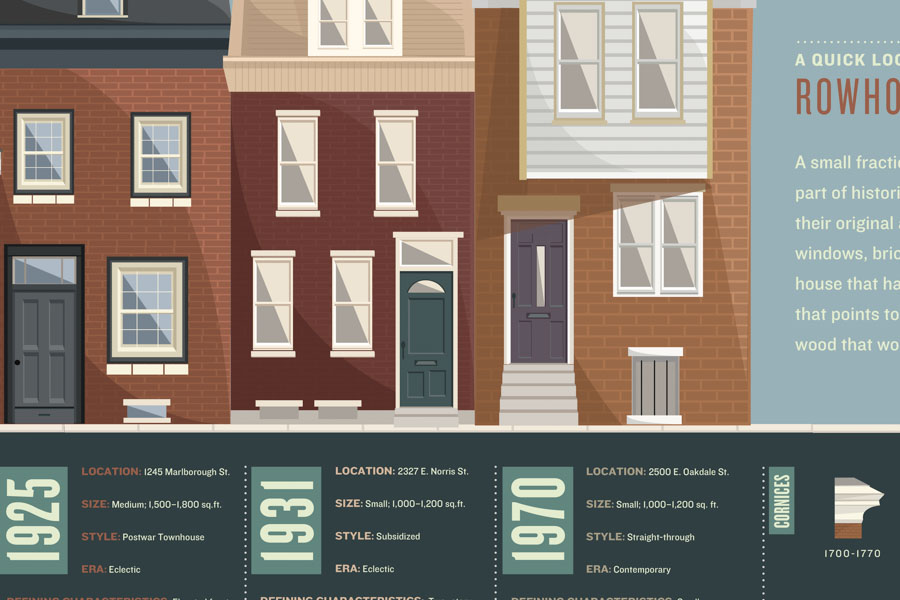
A preview of an infographic about the history of Fishtown Rowhouses
Creative and Art Direction by: Clifton Fordham, Abby Guido, Bryan Satalino
Designed by Julia Lewis
Then came his colleague, Guido, whose passion lays in the data. Once Satalino brought up his desires to puzzle out “how many bricks do you think are in Philly?,” she was in.
“I grew up literally across the street from the border of Philadelphia and Abington,” she said. “Rowhouses were something I took for granted. I lived in New York, LA … I loved that I was able to come back and afford to buy a house. That makes Philly great! Rowhouses have always been attractive because of Philly home ownership.”
Soon, conceptualization for the PhillyRow project was swiftly underway, looping in their fellow colleague, Fordham, who possessed an impressive knowledge for architectural history and renovation. He even comprehensively renovated his own rowhouse in the Passyunk Square neighborhood last year.
“Working with graphic designers at Temple University is particularly exciting because of the potential of conveying my interest in the building technology and building design to a broader audience that needs to learn more about the places in which they dwell,” said Fordham.
The trio of professors also tapped several of their graphic design students as interns for the summer of 2015 to help build a foundation for the project and produce academic field work of area-wide facades, including those in West Philly, South Philly and Fishtown.
“In different neighborhoods, you can see the different traits of the workers and how they restored houses,” said Guido.
“In Fishtown and Kensington, there was a lot of galvanization; a lot of sheet metal and iron work happened here,” chimed in Satalino. “You see the quilted sheet metal on cladding of windows. Workers made that and then, they’d take it home and put it on their houses.”
Through research, they also uncovered that the Victorian era was a huge growth spurt for rowhome housing in Philly. “If you look at Philadelphia’s population growth, you can actually see when there was a big growth in rowhouses,” said Satalino.
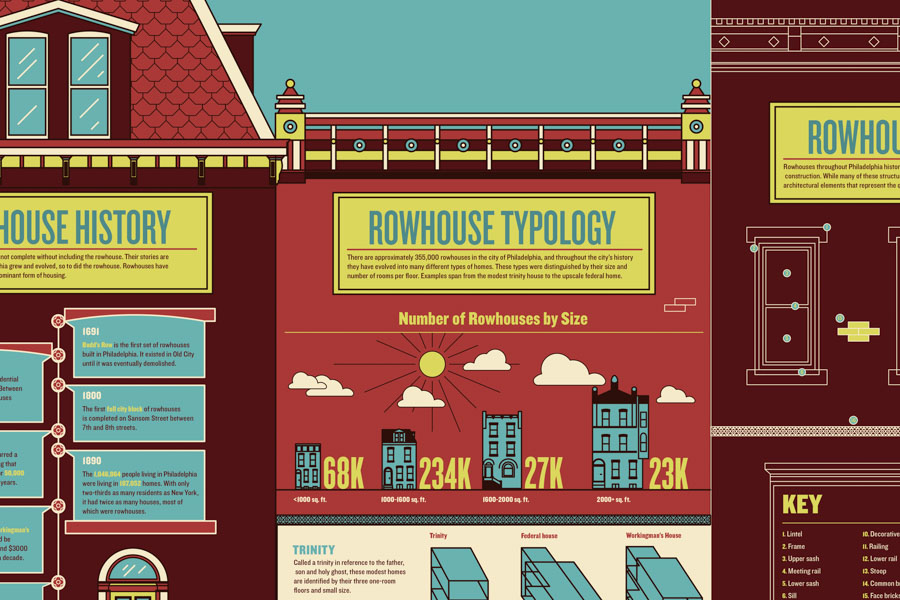
A preview of an infographic about the history of Fishtown Rowhouses.
Creative and Art Direction by: Clifton Fordham, Abby Guido, Bryan Satalino
Designed by Dominic Costanzo
Even more fascinating was the notion that carpenters, masons, roofers, etc., would “pitch into together to buy blocks and then, they would each get a house and that would be their payment,” he continued.
The first installation of PhillyRow’s field research will make its public debut through the course of three days of events at Minnow Lane (2029 Frankford Ave.), from Oct. 7–9, as part of Design Philadelphia 2016. Locals will be able to uncover a data-packed history lesson of Fishtown row homes, executed through a series of eye-catching infographics we can’t help but keep digging into.
For example, the oldest Federal Town House-style of rowhouse was built in the Colonial era on Frankford Avenue and the oldest known still-standing residence in Fishtown/Kensington was built for Frederick Rapp, a German soldier turned American doctor. Another fun fact? Richard James, who made James Industries, invented and manufactured the Slinky toy on Richmond Street in a rowhouse.
Oh, about that question that kickstarted the whole PhillyRow project? Here’s a teaser: It takes an average of 21,038 total bricks to build one two-story rowhouse. The bricks weigh in total 94,671 pounds — which is approximately the same as three SEPTA buses. The total number of bricks in rowhouses in Philly though, you’ll have to ask attend PhillyRow’s event for that fun fact.
“We all see this project as linking academic interests with public service and civic pride,” concluded Fordham.
Learn even more about the neighborhood for which you live by hitting Minnow Lane for PhillyRow’s first-ever installation through the course of these events: Installation Opening on Oct. 7, 5:30–8PM, featuring known mural artist who specializes in rowhouses, Miriam Singer; a “Draw Your Own City” workshop perfect for kids on Oct. 8, 10–11AM; and a “Color Classic Philadelphia Rowhouses” workshop for adults and kids alike, on Oct. 8, 3-5PM.
There’s also PhillyRow’s Fishtown Coloring Book available for purchase, which is great for all ages and features neighborhood-wide facades.
To learn more about the project and stay up to the date on their latest rowhouse developments, visit www.phillyrow.com.
THANKS FOR SUPPORTING SPIRIT NEWS!
Please follow this link to visit Amazon.com through our affiliate portal. It’s the same Amazon.com you know and love, but when you shop through this link we receive a small cut at no added cost to you!
By using this link to do your normal Amazon.com shopping, you’ll be supporting your local newspaper.
